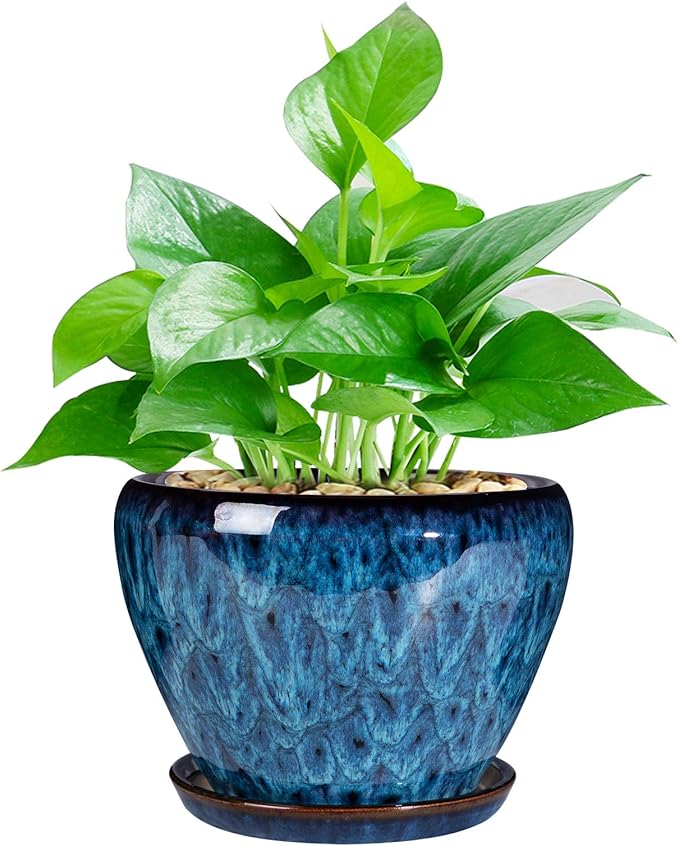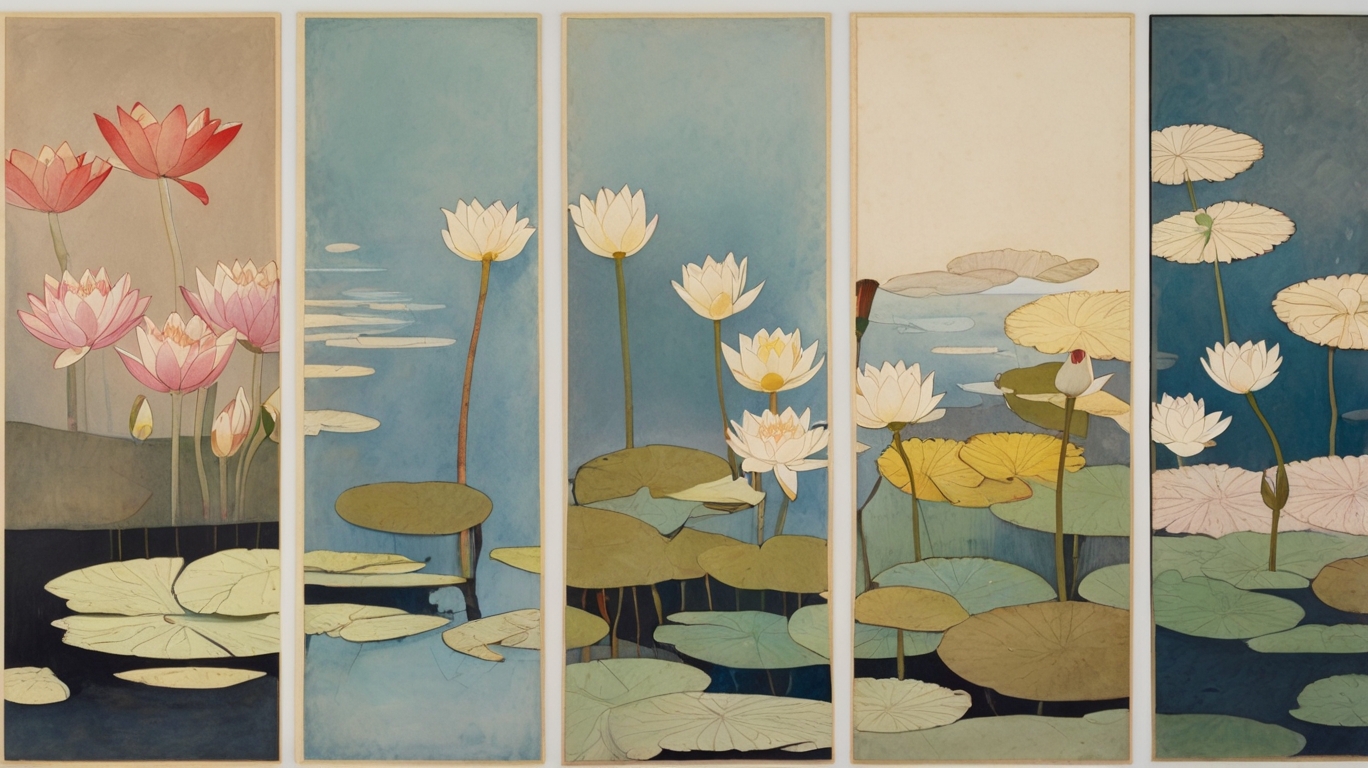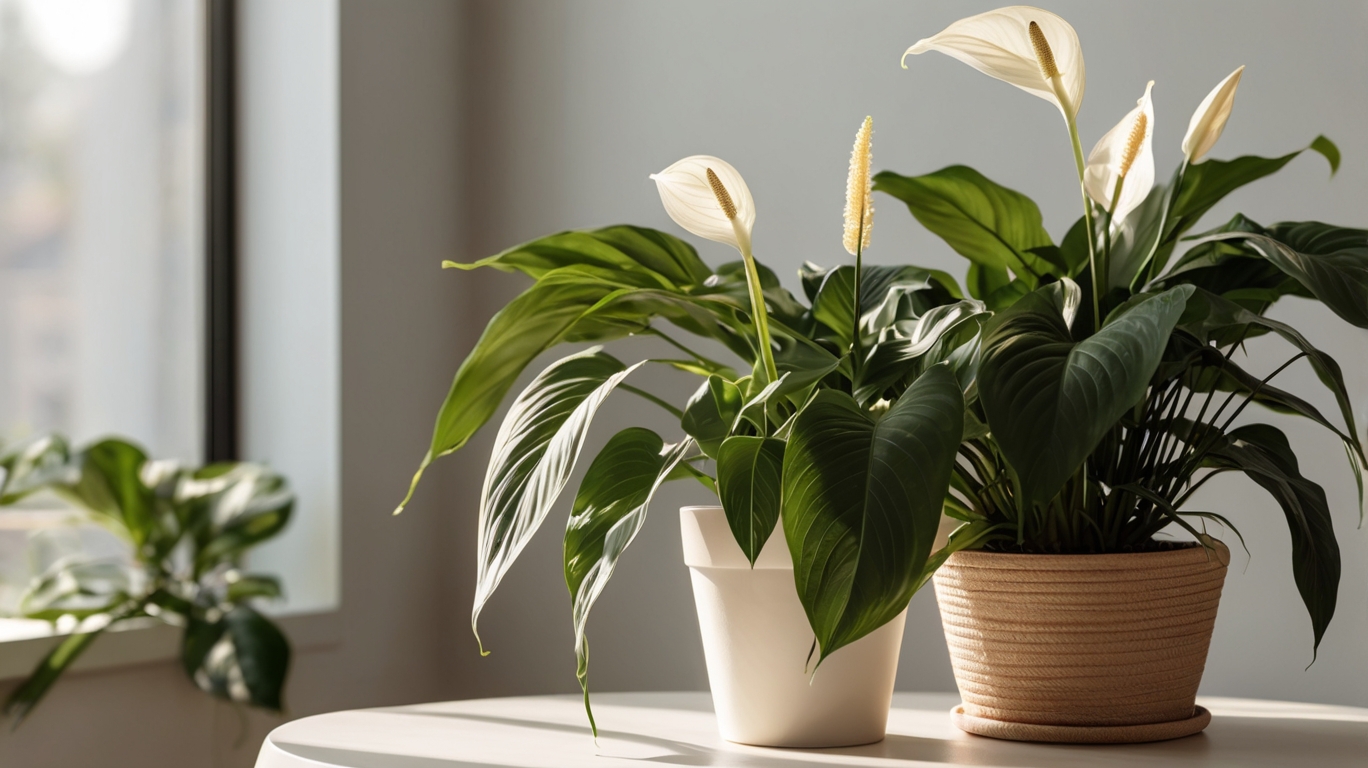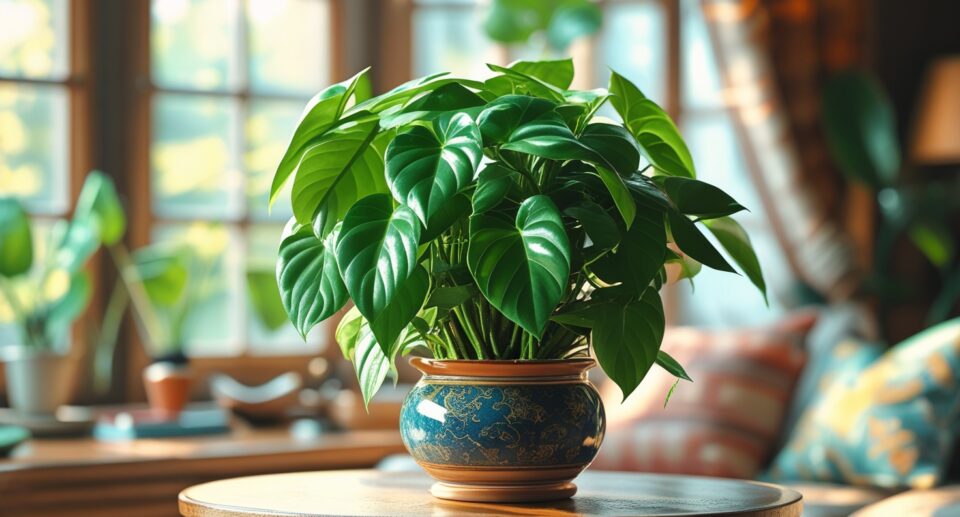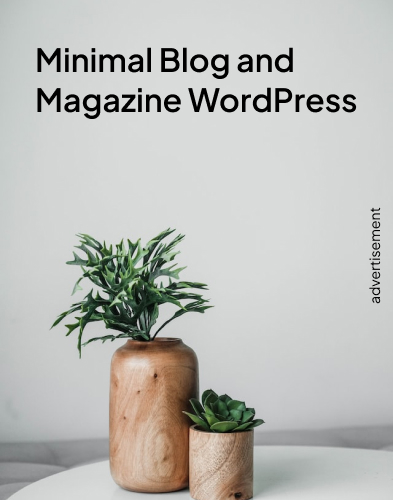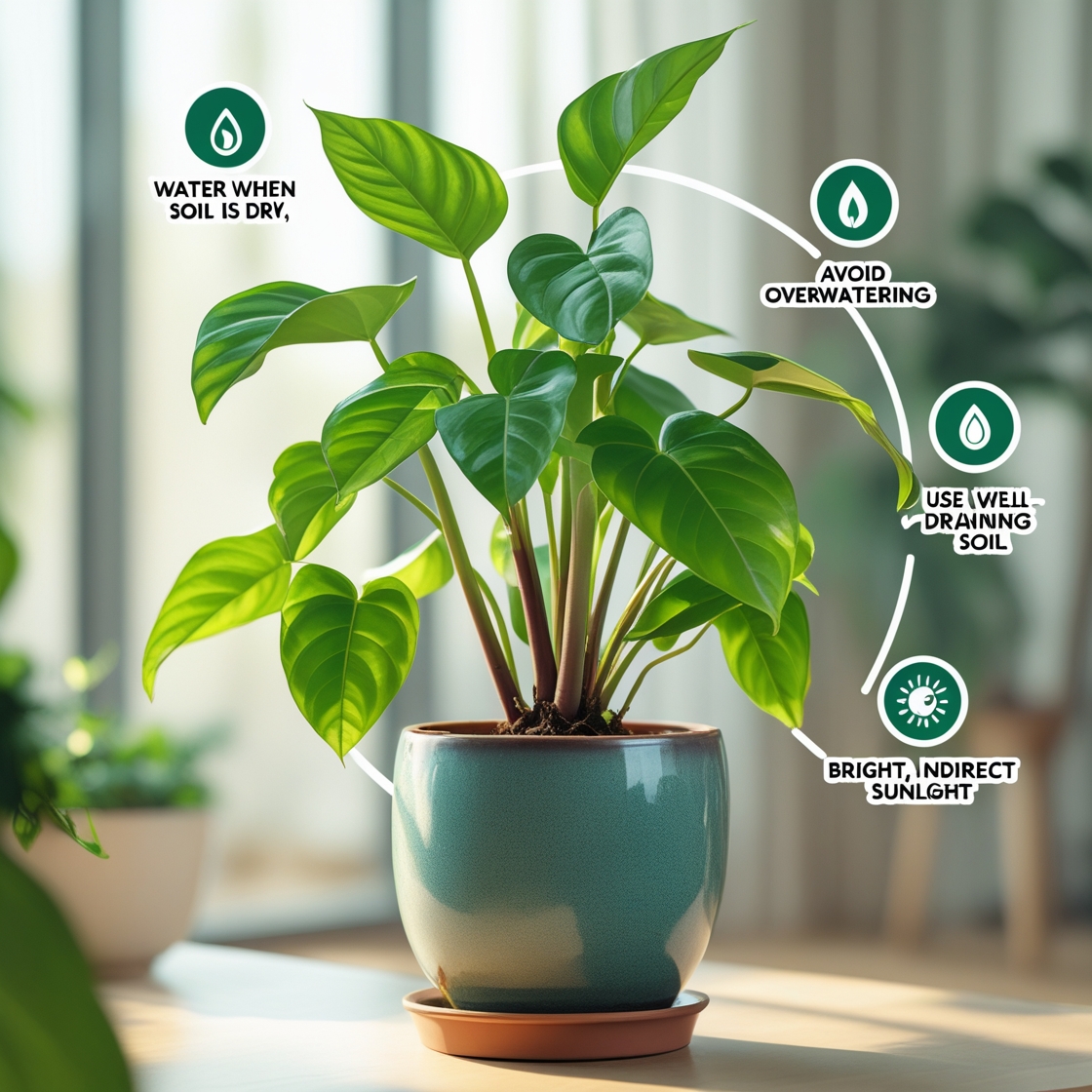What Does a Money Plant Look Like? #1 Beginner’s Guide
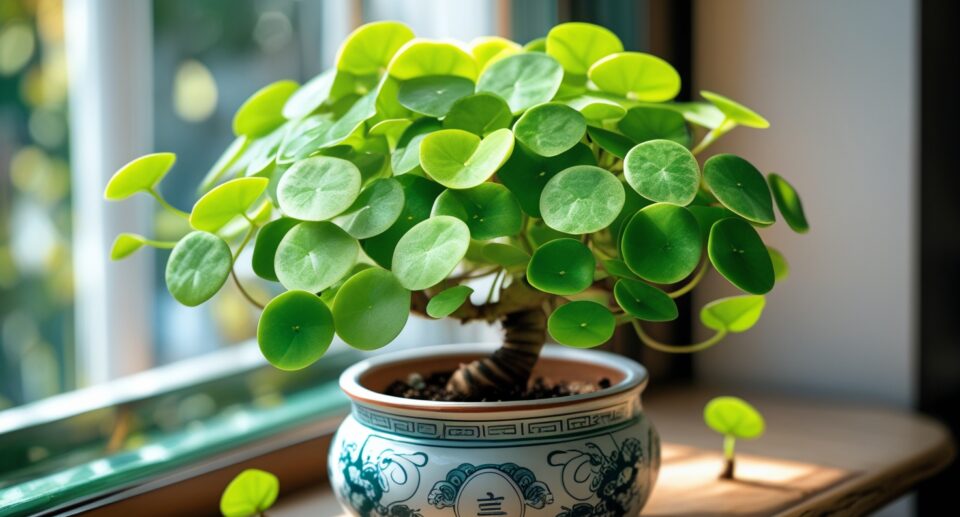
Introduction: The Fascinating World of Money Plants
Money plants occupy a special place in homes and gardens worldwide due to their aesthetic appeal and cultural significance. Known scientifically as Epipremnum aureum (commonly called pothos or devil’s ivy), these plants are celebrated not only for their lush green foliage but also for their association with prosperity, good fortune, and positive energy in folklore and traditions. They belong to the Araceae family and have earned a reputation for being one of the most low-maintenance and versatile houseplants.
The appearance of the money plant often varies depending on the species and growing conditions, but it is typically marked by striking heart-shaped leaves. These leaves come in varying shades, ranging from rich emerald green to vibrant hues featuring yellow or white variegation. The money plant’s stems are slender and can grow in trailing or climbing forms, making it adaptable to a variety of decorative arrangements, such as hanging baskets or trellises. Some varieties, like the jade plant and Pachira aquatica, are also referred to as money plants, offering different shapes and textures for plant enthusiasts.
The enduring fascination with money plants goes beyond their visual appeal. They are prized for their air-purifying qualities, benefiting indoor environments by removing harmful toxins while simultaneously enhancing humidity levels in the space they occupy. Their easygoing nature allows them to flourish with modest care—requiring minimal water, indirect sunlight, and an occasional trim to maintain their striking appearance.
With their unique ability to grow in containers filled with soil or water, money plants exemplify adaptability. They thrive under various lighting conditions, from bright, filtered sunlight to low-light spaces, which makes them ideal for apartment dwellers or anyone new to plant care. Their versatility, coupled with their cultural symbolism and health benefits, makes them a favorite choice among beginners, hobbyists, and seasoned plant collectors alike.
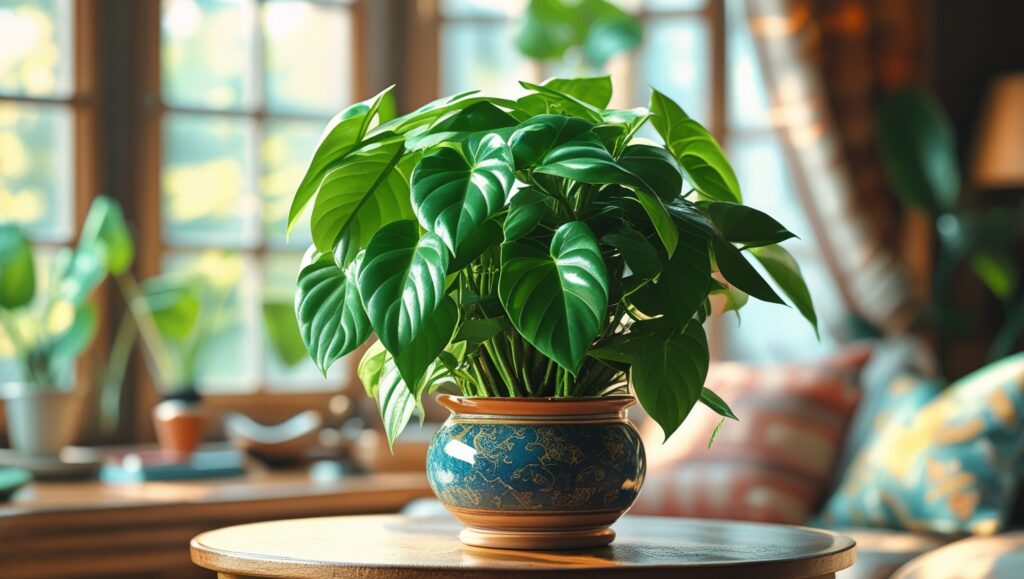
What is a Money Plant? Understanding Its Origins and Varieties
The money plant, commonly known for its name linked to wealth and prosperity, is a popular indoor and outdoor plant cherished for its decorative leaves and easy-to-maintain qualities. Interestingly, the name “money plant” does not refer to a single species but encompasses several different varieties. Scientifically, structures that fall under this term include plants such as Epipremnum aureum (commonly called Pothos), Crassula ovata (Jade Plant), and Pachira aquatica (commonly referred to as the Money Tree).
Origins
The origins of the money plant depend on the specific species in question. Epipremnum aureum, often referred to as Devil’s Ivy, hails from Southeast Asia and is predominantly found in tropical environments. The Jade Plant (Crassula ovata) is native to South Africa and Mozambique and thrives in arid conditions. Meanwhile, the Money Tree (Pachira aquatica) originates from the swamps of Central and South America. These diverse origins contribute to their varying growth requirements, leaf structures, and symbolic meanings in different cultures.
Varieties
Money plants vary widely in appearance and care requirements, and understanding their varieties is essential for successful cultivation. Some prominent examples include:
- Pothos (Epipremnum aureum): Known for its heart-shaped green leaves, sometimes streaked with gold or white, Pothos grows as both trailing and climbing vines, suitable for hanging baskets or vertical spaces.
- Jade Plant (Crassula ovata): Characterized by thick, fleshy leaves resembling small coins, the Jade Plant is a succulent species that requires minimal water and thrives in bright sunlight.
- Money Tree (Pachira aquatica): Often found braided for aesthetic purposes, it features palmate leaves and is widely associated with good luck and fortune.
Some regions also associate plants such as Lunaria annua, or Honesty Plant, with the name “money plant” due to its coin-shaped translucent seed pods. These variations reflect cultural attributes, physical distinctions, and environmental adaptability.
Understanding the money plant’s origins and varieties highlights its versatility as a houseplant and ornamental addition, catering to diverse tastes and spaces. Each type offers unique visual appeal, making the plant a favorite for homes and offices worldwide.
Physical Traits of a Money Plant: Leaves, Stems, and Overall Appearance
The money plant, a common name for species like Epipremnum aureum or Pachira aquatica, exhibits distinct physical characteristics that make it a popular choice for indoor and outdoor spaces. Its appearance varies depending on the species, but several notable traits typically define the plant.
Leaves
- Shape and Texture: The leaves of the money plant are often broad, heart-shaped, or oval depending on the variety. In species like Epipremnum aureum, the foliage tends to have a smooth texture and a glossy finish that reflects light beautifully.
- Color: The coloration of the leaves is a significant feature. Commonly, they appear in vibrant shades of green, but certain variants display variegation with streaks of yellow, light green, or white. These color patterns make the plant visually appealing.
- Size: Leaf size depends on the growth conditions. Under ideal environments, the leaves may grow large, while smaller leaves often form when placed in low-light areas indoors.
Stems
- Structure: Money plant stems are thin yet strong, often trailing or climbing depending on how the plant is cultivated. The trailing stems can extend over several feet, making them ideal for hanging planters or vertical displays.
- Flexibility: These stems are flexible, supporting the plant’s climbing nature. When given support like trellises, the stems easily cling and grow upward.
- Texture and Color: The stems are typically smooth and green, complementing the plant’s leafy appearance perfectly. Mature stems may sometimes fade into brown hues, especially in species like Pachira aquatica.
Overall Appearance
The money plant is renowned for its adaptability and ornamental aesthetics. It tends to have a lush and bushy growth pattern, particularly in environments with optimal care. As a climbing or trailing plant, it can fill spaces effectively, showcasing an attractive cascade of greenery. In potted arrangements, it exudes an elegant yet understated charm, suitable for homes, offices, and gardens alike.
Different Types of Money Plants: Common Species and Their Unique Looks
Money plants are renowned not just for their symbolism of prosperity but also for their decorative appeal. There are several species commonly referred to as money plants, each with distinct features. Understanding the differences among them is essential for choosing one that suits your environment.
1. Pothos (Epipremnum aureum)
Often called Devil’s Ivy, Pothos is one of the most popular types of money plants. Its heart-shaped leaves come in shades of green, often variegated with gold or white streaks. The plant thrives in low light conditions and is known for its trailing vines, making it ideal for hanging baskets or shelves. It’s hardy and requires minimal care, which makes it suitable for beginners.
2. Jade Plant (Crassula ovata)
The Jade Plant is a succulent variety widely associated with financial good luck. Its glossy, rounded, green leaves resemble coins, symbolizing wealth and prosperity. The plant grows upright, with woody stems that give it a bonsai-like appearance. Being a succulent, the Jade Plant is drought-tolerant and thrives in bright, indirect sunlight.
3. Chinese Money Plant (Pilea peperomioides)
This species is recognized by its circular, pancake-shaped leaves that often grow on a single upright stem. The unique look of the leaves and their resemblance to coins enhance its appeal. The Chinese Money Plant is compact and perfect for small spaces like desks or shelves. It grows best in bright, indirect light and requires frequent watering.
4. Pachira Aquatica
Known commonly as the Money Tree, Pachira Aquatica is larger than other types. Its braided trunk and lush, green foliage make it a striking indoor addition. The leaves, shaped like fingers, give it an elegant look. This plant is believed to attract wealth, especially when placed in feng shui-recommended spots. It thrives with regular watering and bright, indirect sunlight.
5. Lucky Bamboo (Dracaena sanderiana)
While not a true bamboo, this plant is often grouped among money plants due to its association with luck and prosperity. Lucky Bamboo typically grows in water-filled containers and features upright green stalks with leaves extending outward. It’s easy to maintain and is frequently shaped into spirals or braided forms for aesthetic appeal.
Each of these plants offers unique aesthetics and care requirements, making them ideal for a variety of indoor environments and lifestyles.
Why Are They Called Money Plants? The Symbolism and Cultural Significance
The term “money plant” encompasses not just its physical appearance but also its deep-rooted symbolism across various cultures. This common name stems from the belief that its round, coin-shaped leaves represent prosperity, wealth, and financial abundance. While the plant’s botanical name differs depending on the variety, such as Epipremnum aureum (commonly known as pothos) or Crassula ovata (jade plant), the nickname “money plant” serves as a universal link to the concept of good fortune.
In feng shui, money plants are regarded as powerful tools for attracting positive energy and improving financial luck. They are often strategically placed in southeast corners of homes or workplaces, which are considered the wealth areas in feng shui practices. Enthusiasts believe that its presence not only enhances monetary gain but also promotes harmony and balance within the space.
The cultural significance of money plants also varies across regions. In India, they are often gifted during celebrations, with the idea that gifting a money plant symbolizes a wish for the recipient’s financial success. Many Indian households treasure it as a plant that brings prosperity and removes bad financial energy. Similarly, in Chinese culture, the jade plant is frequently associated with wealth and status, making it a popular choice for homes and businesses.
Despite these cultural views, the nickname “money plant” also arises from practical observation. These plants are known for their resilience and easy propagation, symbolizing continual growth—a metaphor for financial abundance. Their low-maintenance nature often draws parallels to effortless income or success.
The symbolic association with wealth has fueled the popularity of these plants worldwide. Their name reflects not only their aesthetics resembling coins but also humanity’s universal hope for prosperity and growth.
Indoor vs. Outdoor Money Plants: How Their Growth Impacts Their Appearance
Money plants, also known as Pothos or Pachira aquatica, thrive in diverse environments, and their appearance often varies depending on whether they are grown indoors or outdoors. Environmental factors such as sunlight exposure, humidity, temperature, and soil composition significantly influence their growth patterns, shape, and overall aesthetics.
Indoor Money Plants
Indoor money plants are typically kept in controlled environments where sunlight is filtered or indirect. Their growth tends to be slower, and their leaves often develop a glossier, vibrant green appearance due to reduced exposure to harsh weather conditions. Indoors, they are usually grown in pots or containers, which can limit root expansion. As a result, indoor money plants often adopt a compact and manageable size that complements home and office decor.
These plants rarely bloom indoors because the conditions typically lack the intense sunlight required for flowering. However, their aesthetic appeal lies in their trailing vines and heart-shaped leaves. Regular pruning is necessary to maintain their shape and encourage new growth. Indoor money plants are often preferred for smaller spaces due to their adaptability and minimal maintenance.
Outdoor Money Plants
Outdoor money plants experience a more natural and dynamic growth environment. With access to direct sunlight and open space for root expansion, they tend to grow larger and spread more abundantly. Their leaves may display more variation in color, such as deeper greens or occasional yellowing, influenced by extended exposure to sunlight. Outdoor conditions also encourage faster growth, leading to longer vines and a denser foliage structure.
Unlike those grown indoors, outdoor money plants may occasionally produce flowers if the conditions are ideal. Additionally, the leaves may appear slightly tougher compared to the softer texture observed in indoor plants. Humidity and other weather factors can also impact the development of the plant, often giving it a fuller, more natural look.
Key Differences in Appearance
- Size: Outdoor money plants typically grow larger and fuller compared to the compact size of indoor plants.
- Leaf Texture: Indoor plants have softer, glossier leaves, while outdoor plants may have tougher foliage.
- Color: Leaf pigmentation tends to be more uniform indoors but varies outdoors due to sun exposure.
- Growth Speed: Outdoor plants grow faster and spread more extensively, while indoor plants maintain a slower, ornamental growth.
By understanding these differences, plant enthusiasts can choose whether to cultivate money plants indoors or outdoors to suit their aesthetic preferences and space requirements.
Best Conditions for a Healthy-Looking Money Plant: Light, Water, and Soil Needs
Money plants thrive when given the right combination of light, water, and soil. Understanding these elements is vital for maintaining their health and ensuring their lush, vibrant appearance.
Light Requirements
Money plants prefer bright, indirect sunlight. Excessive exposure to direct sunlight can scorch the leaves, causing discoloration or browning. On the other hand, insufficient light may lead to slower growth and leggy stems. Placing the plant near a window with filtered light is ideal, especially in areas where sunlight intensity varies across seasons. Fluorescent or grow lights can also serve as a substitute in homes or offices with minimal natural light.
Water Needs
While money plants are relatively low-maintenance, improper watering can harm them significantly. Overwatering may result in root rot, a common issue for these plants. To prevent this, it is advisable to let the soil dry out slightly between watering sessions. A general rule is to water the plant only when the top inch of soil feels dry to the touch. During colder months, the frequency of watering should be reduced, as the plant’s growth slows down in winter.
Soil Preferences
A well-draining soil rich in nutrients is essential for a thriving money plant. Potting mixes specifically designed for indoor plants often work well. Adding components such as perlite, sand, or vermiculite to improve aeration and drainage can reduce the risk of waterlogging. Money plants benefit from a slightly acidic to neutral pH level, typically ranging from 6.0 to 7.5. Regular re-potting in fresh soil ensures access to nutrients and helps avoid overcrowding of roots.
By ensuring suitable light, watering habits, and soil quality, the money plant can flourish, yielding its lush green foliage that many people find desirable for both aesthetic and symbolic value.
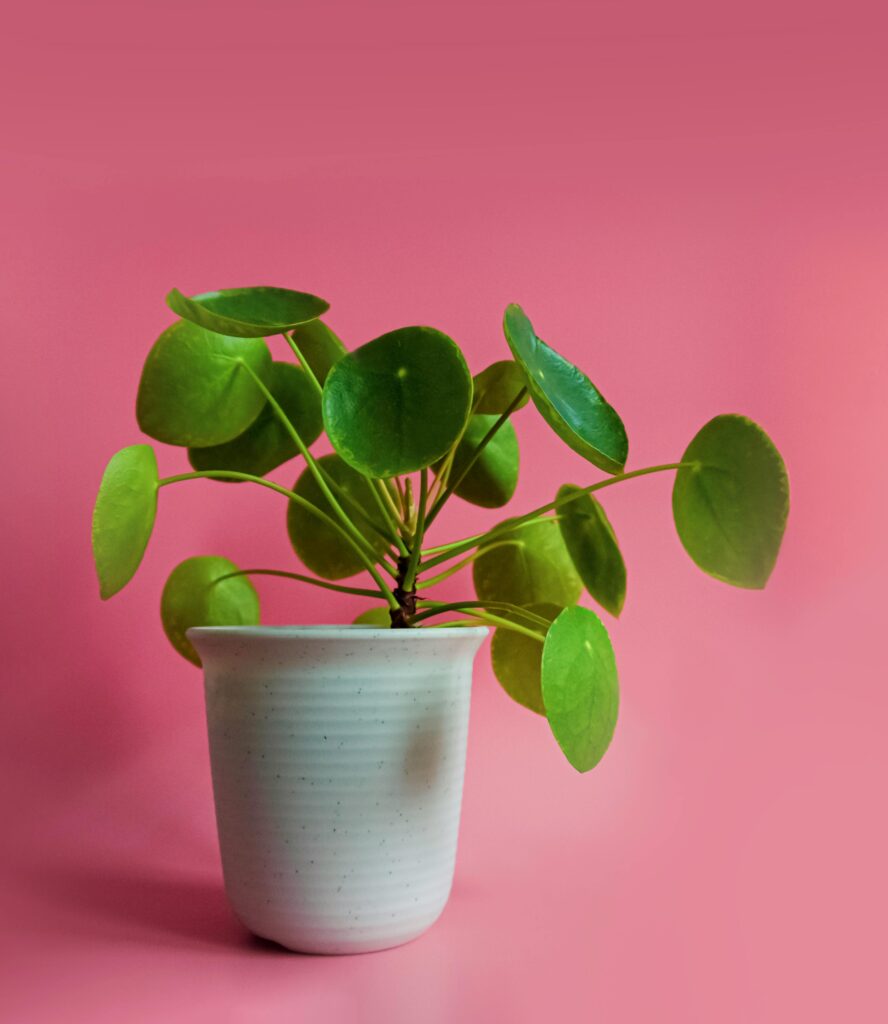
How to Identify a Money Plant: Tips for Beginners
Identifying a money plant requires paying attention to its unique characteristics, including its leaves, stems, and overall growth pattern. Money plants are popular indoor and outdoor greenery options, often admired for their aesthetic appeal and low-maintenance nature.
Common Traits of a Money Plant
Money plants, often referred to as Pothos or Devil’s Ivy, exhibit several distinguishing features. Here are their most notable traits:
- Leaf Shape and Texture: The leaves are typically heart-shaped, with a slightly glossy surface. Depending on the cultivar, their coloration can range from solid green to variegated with white, yellow, or light green streaks.
- Growth Pattern: These plants are climbers or trailers, with vines that can grow several feet long. Their flexibility allows them to grow in hanging baskets, containers, or along vertical trellises.
- Stem Characteristics: The stems are soft and green when young but may become slightly woody as they age. They are easy to propagate by cutting and placing in water or soil.
- Aerial Roots: Tiny aerial roots often form along the stem. These are used to cling to surfaces, making the plant ideal for vertical growth.
Environment Clues
Observing the environment a money plant is growing in can also provide hints. Consider the following:
- Placement: Money plants are often found indoors in pots, growing in well-draining soil. They thrive in indirect sunlight but can adapt to low-light conditions.
- Watering Needs: They prefer moist soil but can tolerate periods of drought, making them hardy for beginners.
- Climate: Money plants are native to tropical regions and flourish in warm and humid conditions, but they can also thrive indoors regardless of the climate outdoors.
Key Differences from Similar Plants
Though it resembles some other houseplants, such as Philodendrons and Arrowhead vines, money plants can be differentiated through their characteristic leaf patterns and easy-to-propagate vines. Beginners often confuse them due to overlapping traits, so closely inspecting the leaf shape, size, and growth habit can help distinguish between them.
Understanding these traits allows anyone to identify a money plant reliably, even with little prior knowledge. With practice, recognizing the vibrant greenery of a money plant becomes second nature.
Common Misconceptions: Plants Often Confused with Money Plants
Money plants are frequently mistaken for other species due to similarities in appearance or shared associations with prosperity and good fortune. These mix-ups can lead to confusion, especially for beginners seeking to identify or care for the plant correctly. Understanding these differences helps to avoid misidentifying plants and ensures proper care.
Plants Commonly Confused with Money Plants
Several other plants share characteristics with money plants, leading to common misconceptions. Below is a list of such species and their distinguishing traits:
- Pachira Aquatica (Money Tree) Often labeled as a “money plant,” Pachira Aquatica is an entirely different species. It has a braided trunk and shiny green leaves shaped like an open hand. Unlike the trailing growth of a typical money plant, this tree grows upright and can reach several feet in height.
- Jade Plant (Crassula Ovata) The jade plant is a succulent with thick, round, fleshy leaves that some associate with coins due to their shape. While its symbolic connection to wealth aligns with the money plant, the jade plant’s upright growth and lack of trailing stems differentiate them visibly.
- Golden Pothos (Epipremnum Aureum) Golden pothos, often confused with the money plant, is a vining plant with heart-shaped leaves marked by golden or pale green variegation. Although closely related to money plants like Epipremnum pinnatum, it lacks the uniform green of non-variegated money plants.
- Silver Dollar Vine (Xerosicyos Danguyi) The silver dollar vine is a succulent with small, coin-shaped leaves, creating another metaphorical tie to wealth. Its gray-green foliage and slower-growing nature make it distinct from the more vibrant money plant.
Reasons for Confusion
The confusion typically stems from overlapping symbolism, such as associations with prosperity, and similarities in leaf shape or trailing growth patterns. Additionally, plants with decorative appeal and easy maintenance often see their names used interchangeably, further blurring distinctions.
Understanding these nuances equips new plant enthusiasts to make informed decisions when acquiring or caring for what they believe to be a money plant. Detailed observation of each plant’s physical characteristics will prove helpful in distinguishing between species.
Caring for a Money Plant: Ensuring It Looks its Best
Proper care is essential for keeping a money plant healthy and vibrant. These attractive houseplants thrive in various environments but require attention to specific factors for optimal growth and appearance. Understanding their needs in terms of light, water, soil, and overall maintenance ensures that the plant remains lush, green, and striking.
Light Requirements
Money plants flourish in bright, indirect light. They tolerate low-light conditions but grow more slowly without sufficient exposure. Placing them near windows with filtered sunlight or in moderately lit rooms promotes healthy leaves and robust stems. Avoid direct sunlight, as it can scorch the foliage, causing slow recovery or permanent damage.
Watering Guidelines
Overwatering is a common mistake when caring for a money plant. While they prefer slightly moist soil, leaving the soil waterlogged may result in root rot. A pot with drainage holes ensures excess water escapes, preventing stagnation. It is advisable to water only when the top layer of soil feels dry to the touch. During winter months, reduce watering since the plant’s growth slows.
Soil and Fertilizer Choice
Money plants grow best in well-draining soil rich in organic matter. A mix containing peat, vermiculite, or coarse sand enhances aeration and prevents water retention. Fertilize the plant every two to three weeks during its growing season with a balanced liquid fertilizer. Dormant periods in winter do not require fertilization.
Maintenance and Pruning
Regular pruning keeps a money plant looking tidy and encourages bushier growth. Trim yellowing or damaged leaves to maintain its aesthetic appeal. For climbing varieties, provide a trellis or support for vertical growth. Cleaning leaves occasionally with a damp cloth removes dust and boosts photosynthesis.
Pest Control and Health Monitoring
Keeping an eye on pests, such as spider mites or mealybugs, is essential. Wiping affected areas with a neem oil solution or insecticidal soap helps control infestations. Promptly addressing any signs of wilting, discoloration, or stunted growth prevents long-term issues.
By paying attention to the above aspects, gardeners and plant enthusiasts can ensure their money plant remains a centerpiece in any living space.
Popular Decorative Uses of Money Plants: Enhancing Your Space
Money plants, known for their aesthetic appeal and minimal care requirements, are widely used in interior and exterior decor to bring freshness and style to spaces. Their versatility allows them to adapt to various settings, offering unique and visually pleasing decorative possibilities.
Indoor Decoration
- Desktop or Table Accent: Money plants are often grown in small pots or glass containers filled with water and pebbles, making them perfect for desks, dining tables, or coffee tables. Their compact size and vibrant green leaves add a touch of nature to workspaces and living rooms.
- Wall-Mounted Planters: Placing money plants in hanging wall planters enhances wall decor and creates a natural, vertical garden effect. This is ideal for modern spaces where floor space might be limited.
- Living Room Corners: Larger varieties of money plants can be placed in ceramic or woven pots to fill empty corners. Their trailing vines help soften the angularity of furniture pieces.
- Bathroom Decor: Money plants thrive in humid conditions, making them an excellent option for placement in bathrooms. A small pot near the sink or on a shower shelf can enliven the atmosphere.
Outdoor Spaces
- Balconies and Patios: Hanging baskets or climbing variants of money plants can elevate outdoor seating areas. Their cascading foliage can act as a natural curtain, providing privacy and shade.
- Fences and Trellises: Money plants can be trained to climb fences or trellises, adding greenery to vertical surfaces and enhancing the outdoor aesthetic.
Creative Uses
- Terrariums and Glass Displays: The plant’s adaptability makes it ideal for terrariums, where it pairs beautifully with pebbles, moss, or miniature figurines.
- Gift Option: Money plants are commonly presented as thoughtful gifts due to their symbolic association with prosperity and luck.
Whether indoors or outdoors, money plants complement varied design styles, from rustic and minimalist to contemporary and bohemian. Their decorative versatility makes them a favorite among home and garden enthusiasts.
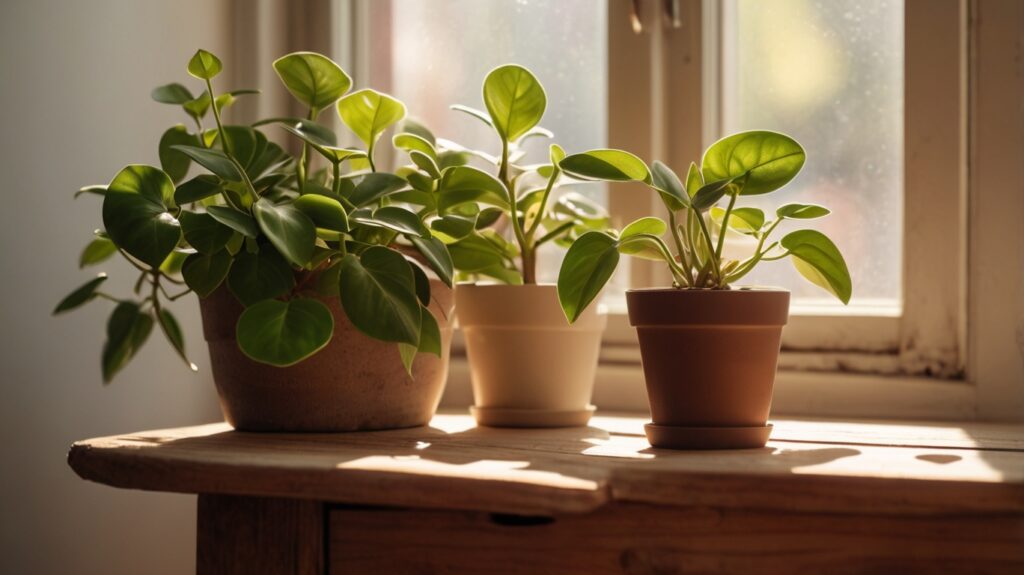
Conclusion: Embracing the Beauty and Benefits of Money Plants
The money plant, known for its graceful vines and heart-shaped leaves, holds a unique position in both botanical and cultural realms. Its visual appeal is matched by its significance in promoting positivity and well-being, making it a favored addition to homes and workplaces across the globe.
This plant is remarkably adaptable and versatile, growing readily in various environments, ranging from small pots indoors to sprawling spaces outdoors. It thrives in indirect sunlight and requires minimal maintenance, making it ideal for those with busy schedules or those new to gardening. Its ability to grow in water, soil, or a combination of both further highlights its resilience, offering multiple ways to cultivate its lush beauty. Beyond its easy care, its cascading growth pattern can infuse interiors with a sense of vibrancy and life, especially when placed strategically near windows, shelves, or hanging from ceilings.
Culturally, the money plant holds a reputation for symbolizing wealth and good fortune, particularly in regions such as Southeast Asia. Feng Shui practitioners value it for its purported ability to attract positive energy, harmony, and prosperity, especially when placed in the right areas such as the southeast corner of a home or office. This symbolism has made it a popular gift choice for new beginnings, such as housewarmings or business launches.
Additionally, the money plant plays a role in improving indoor air quality. Its ability to absorb toxins like formaldehyde and carbon monoxide underscores its practical benefits beyond aesthetics and symbolism, contributing to a healthier living environment. Its multi-functional attributes make it not just a decorative element but also a tool for enhancing one’s surroundings in material and intangible ways.
By growing a money plant, individuals have the opportunity to experience both its aesthetic charm and its underlying benefits. Whether valued for its ease of care, air-purifying properties, or cultural significance, this plant deserves its place among the most beloved indoor greenery varieties.
Click the link below to buy “FLOWER Retro Wooden Stand Plant Terrarium with 3 Bulb Glass Vases for Hydroponic Home & Office Décor”
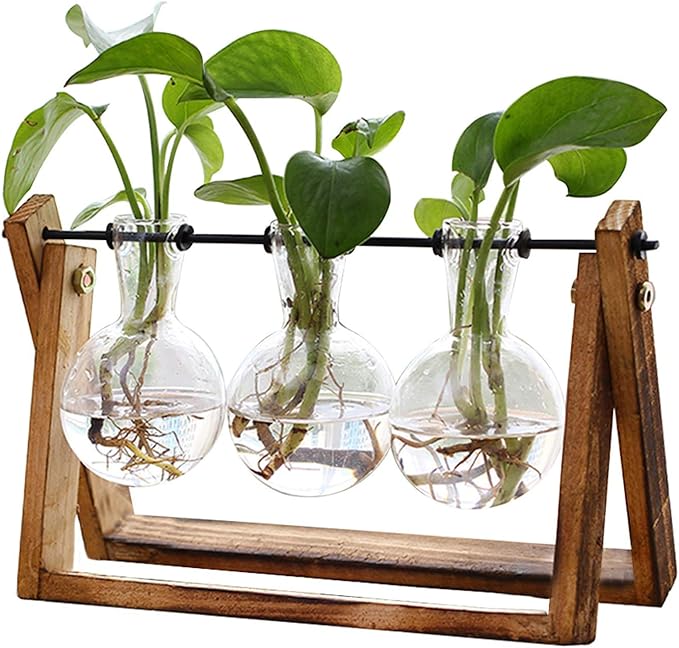
“Click the link below to buy “6-inch modern ceramic planter with glaze, drainage hole, and saucer for indoor & outdoor plants.”
